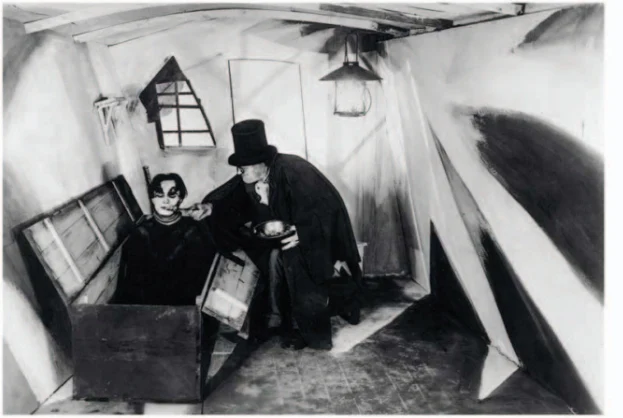'The Cabinet of Dr. Caligari' stands as a cornerstone in cinematic history, not merely as the first feature-length horror movie, but as a trailblazer that has left an indelible mark on modern cinema.
While its influence is often attributed to its avant-garde set design, there are subtler elements within Robert Wiene's groundbreaking psychological thriller that have become fixtures in the realm of movie storytelling.
One of these enduring elements is the introduction of the "unreliable narrator," a literary device that had long been a staple in literature but found its cinematic debut in the character of Francis, portrayed by Friedrich Fehér.
The seemingly innocent love triangle that Francis recounts takes unexpected turns, revealing a narrative filled with deceptive layers and twists. This narrative innovation would go on to shape countless stories in the cinematic landscape.
Originally conceived as an indictment of Germany's government during World War I, the screenplay by Hans Janowitz and Carl Mayer underwent a transformation during production, giving rise to a more intricate and possibly groundbreaking feature: the twist ending.
This narrative evolution showcased a level of complexity and unpredictability that was unprecedented in cinema at the time.
The movie draws inspiration from an 11th-century story about a confidence-trickster monk, transforming the monk into Dr. Caligari, a fairground showman with a mysterious cabinet containing the ghostly Cesare, played by Conrad Veidt.
The eerie Cesare's ability to reveal secrets and predict the future introduces another horror-movie device—the fool tempting fate—foreshadowing the demise of a character who dares to inquire about his own mortality.
"The Cabinet of Dr. Caligari" embodies the Expressionist art movement of the early 20th century, heavily influenced by Max Reinhardt's antirealist style. The film embraces the artificiality of theater sets and manipulates darkness to create chiaroscuro, establishing an atmosphere of mystery and unease.
The seemingly distorted angles and backdrops that initially appear as an unsettling style are later revealed to be integral components of the narrative, portraying a world gone mad.
What sets this film apart and contributes to its enduring legacy is its ability to anticipate the psychological horror genre. Similar to Hitchcock's later masterpiece "Psycho," "The Cabinet of Dr. Caligari" takes audiences inside the mind of a madman, exploring the fear of the mask of sanity that even the most disturbed individuals can wear to deceive those around them.
As we revisit this cinematic enigma, it becomes clear that "The Cabinet of Dr. Caligari" transcends its status as a horror classic. It is a pioneering work that delves into the intricacies of narrative construction, leaving an everlasting impact on the art of storytelling in film.
Read more about 10 other select films of this era under the Cinema Pioneers & Trailblazers tag.

